The Sattvic Diet: A Comprehensive Guide
You know, food is such a fascinating, enjoyable, and vital part of our lives, isn’t it? I’ve heard from many people that it feels like we’re all on this never-ending quest to find that perfect diet that works just right for our bodies and lifestyles. Some people eat to fuel up for marathons, others chow down to build muscles, some focus on their meals to enhance their meditation experience, and there are people for whom eating is a form of meditation all in itself (mindful eating). As for me, I’m all about finding a balanced, whole-food way of eating that nourishes my body, keeping me energized and feeling great.
I want to be clear that I’m not advocating for any restrictive diets unless they’re required by health conditions. We’re all unique, and what works for one person might not work for another. It’s essential to listen to our bodies and understand their needs. Our bodies send signals, and learning to interpret them can help us make the best choices for our individual health.
Food is not only fuel, but it’s also a building material for our bodies. The kind of food we eat plays a significant role in the way our bodies look and function. It can make us happy, energetic, sluggish, satisfied, jittery, sleepy, and so much more. It’s truly amazing how powerful food can be, and we are in charge of it.
Think about it – when your car runs out of gas, you go to a gas station and refuel, right? Immediately after, you’re confidently driving off, ready to take on a trip. Would it make sense if, right after refueling, your car had to stay put for a couple of hours because it went into a “gas coma”? Of course not!
In the same way, after fueling our bodies, we should be able to take on the day with vigor and joy. Unfortunately, many of us descend into a “food coma.” Then, we need coffee, tea, and other stimulants to pick ourselves up and go on with the day. It’s sad that a lot of people take this as a fact of life and an inevitable state of being.
In this article, I’ll take a closer look at the Sattvic diet, which focuses on “Positive Pranic” foods that ignite life energy within, nourishing our bodies with whole, plant-based foods that support our health and well-being. Regardless of your background or interest in yoga and meditation, this diet offers some valuable insights into mindful eating and overall wellness. Plus, I’ll share some tips and tricks to help you on your way toward a balanced lifestyle.

Unraveling the Mysteries of the Sattvic Diet
Now, let’s take a deeper look into the Sattvic diet and see what makes it so unique. As I mentioned earlier, the Sattvic diet is also known as the “Positive Pranic diet”, which is centered around foods that are supposed to promote a sense of balance and well-being. It’s rooted in Ayurveda, an ancient Indian system of medicine that believes food can affect not only our physical health but also our mental and emotional states.
The Sattvic diet is based on the concept of the three gunas, which are fundamental energies or qualities found in everything, including the food we eat. These are:
- Sattva (Positive Pranic): Foods that are pure, light, and promote clarity and spiritual growth.
- Rajas (Negative Pranic): Foods that are stimulating, often leading to restlessness and agitation.
- Tamas (Neutral Pranic): Foods that are heavy, dull, and can lead to lethargy and stagnation.
Sattvic foods are meant to nourish our bodies and minds, helping us maintain a sense of inner balance and harmony. They include fresh fruits and vegetables, whole grains, nuts and seeds, dairy products, and mild spices. These foods are believed to support clarity, focus, and overall well-being.
On the other hand, Rajasic and Tamasic foods are thought to create imbalances in our bodies and minds. Rajasic foods, like spicy dishes, caffeinated beverages, and heavily processed foods, can lead to overstimulation and agitation. Tamasic foods, such as meat, alcohol, and fried foods, can lead to lethargy and mental fog.
I know it may sound a bit mystical, but the idea is to choose foods that support our body’s natural rhythms and energy levels. By focusing on Sattvic foods, we can create a diet that helps us feel more centered, balanced, and energized throughout the day.
Now, I’m not suggesting you toss out your favorite chocolate bar or banish your morning coffee forever. The key here is balance and mindfulness. It’s about understanding how the foods we eat impact our bodies and making conscious choices that support our well-being.

The Positive Pranic (Sattvic) Diet: A Quick Guide
Focus on Wholesome
So, let’s chat about the star players in the Sattvic diet: fresh, natural, and wholesome foods. Imagine yourself in a lush garden or farmers market, surrounded by vibrant fruits, veggies, nuts, seeds, and whole grains. These are the ingredients you’ll want to fill your plate with, as they’re packed with nutrients and life energy. Rather than focusing on what to avoid, celebrate these nourishing and vibrant foods that make us feel amazing! After all, there’s no real need for processed and refined foods like white flour, sugar, and anything with an ingredient list that reads like a chemistry experiment.
Cooking Up Some Good Vibes
Now, let’s talk about how to turn these beautiful ingredients into mouthwatering meals, because it’s not just about what you eat but how you cook it, too. Steaming, boiling, and sautéing are your best friends, for sure. While deep-frying and charring are like those high school frenemies you’ve outgrown. Plus, using fresh herbs and spices is like adding a dash of magic to your meals, enhancing both flavor and Pranic energy.
But there’s more to food preparation than just cooking methods. The emotional and mental state of the person preparing the food is just as important as the ingredients themselves. For me personally, cooking has never been a chore, but rather an opportunity for a beautiful offering, a creative outlet, and an expression of love and appreciation.
So, every time I’m in the kitchen, I make a conscious effort to infuse my food with positive energy and intentions. Taking a moment to set a positive intention or express gratitude for the ingredients you’re using is an essential part of meal prep. Set the mood, turn on your favorite music, and think of something pleasant while you cook. You might be surprised at how much more enjoyable and satisfying the cooking process becomes when you embrace it as an act of love and nourishment. By doing so, you’re not only creating delicious meals, but you’re also fostering a deeper connection with your food, your body, and your overall well-being.
The Secret Ingredient
Let’s talk about a little something that can make a world of difference: gratitude. It might seem like a small thing, but trust me, it can have a huge impact on our experience with food and our overall well-being.
When we express gratitude for our food, we acknowledge the journey it took to get to our plates—from the farmers who grew it to the people who transported it, and even the sun and rain that nourished it. This practice allows us to connect more deeply with our meals, our environment, and the world around us.
Before each meal, take a moment to pause and give thanks for the nourishment you’re about to receive. You can simply express gratitude silently or say a few words out loud. This small act of appreciation can help you feel more present and connected during your meal, transforming eating from a mundane task into a nourishing experience.
When we approach our food with gratitude, we’re more likely to savor it, enjoy it, and feel satisfied. So, go ahead and sprinkle some gratitude and appreciation into your life, and watch as it transforms your relationship with food and everything around you.
Finding Your Perfect Balance
Okay, so we’ve got our fresh, lovingly prepared meals; what’s next? The Sattvic way of eating is all about balance. So, let’s talk about mindful eating for a moment, which naturally leads us to find our own perfect balance. When we pay attention to our body’s signals and eat with intention, we’re more likely to feel satisfied without overindulging.
Mindful eating involves savoring each bite, chewing slowly, and being fully present during your meal. It means turning off distractions, like the TV or your phone, and truly enjoying the flavors, textures, and aromas of your food.
It is like cherry on top of the Sattvic sundae! Take a moment to savor each bite of your meal, like you’re a food critic trying to describe the flavors and textures in a bestselling novel. You can see more about developing you mindful eating practice here 👉🏻 Mindful Eating: A Path to Greater Health and Happiness, where I unfold it in greater detail; and check out this 👉🏻 A Comprehensive Guide to Mindful Eating
So, as you cultivate this practice, you’ll find that you become more in tune with your body’s needs, allowing you to eat just the right amount without feeling deprived or uncomfortably full. By embracing the art of mindful eating, you’ll discover the joy of feeling nourished and satisfied without any guilt or restriction.
By weaving these principles into your daily routine, you’ll soon see how the Positive Pranic (Sattvic) way of cooking and eating works its magic on your overall health and well-being. Just see, this way of eating is not just a set of rules – it’s a mindful, nourishing relationship with food that’ll have you feeling like the vibrant, radiant being you were always meant to be.

Food Categories in the Sattvic Diet
Positive Pranic (Sattvic) Foods
Fruits, Vegetables and Berries
Embrace the rainbow! Fruits, vegetables, and berries are the shining stars of the Sattvic diet. They are full of life energy, vitamins, and minerals that keep our bodies nourished and thriving. Opt for a wide variety of fresh, seasonal, and organic produce to keep things interesting and vibrant.
This food group includes most vegetables (except potatoes, tomatoes, garlic, onion, and eggplant). All fruits and berries, whether fresh or dried, are considered to be highly pranic, making them an essential part of the Sattvic diet. These nourishing foods provide a multitude of health benefits and infuse your meals with vitality and energy.
Whole Grains
Whole grains like rice, buckwheat, barley, millet, oats, teff, spelt, and more are a wholesome part of the Sattvic diet and provide exceptional nourishment. To get the most out of their nutritional goodness, be sure to soak or sprout them before cooking. (You can find a complete guide here >> How to Soak ). And here’s a little tip: if you can, try to eat cooked grains within 3 hours to keep their pranic energy at its best.
Whole grains provide sustained energy and are an excellent source of fiber, vitamins, and minerals. So go ahead and mix up your meals with a variety of these wholesome grains, and you’ll be well on your way to a balanced, Sattvic lifestyle.
Legumes
This category includes mung beans, lentils, yellow split peas, chickpeas, beans, organic tofu, and more. Just like grains, they should be soaked or sprouted before cooking. Legumes are packed with protein, fiber, and essential nutrients. When legumes are combined with whole grains, they offer a complete protein source. They’re a versatile and nourishing staple in the Sattvic diet, perfect for creating delicious and satisfying meals.

Nuts, Seeds, and Oils
Nuts and seeds are a fantastic source of healthy fats, protein, and essential nutrients. Go for almonds, walnuts, sunflower seeds, or chia seeds to add a satisfying crunch and an energy boost to your meals.
Soaking raw nuts and seeds is the way to go, as it’s better for digestion. If you prefer a little crunch, you can slightly roast them in smaller amounts. Popular choices include peanuts, hemp seeds, chia seeds, coconuts, pine nuts, walnuts, pecans, sesame seeds, pumpkin seeds, and flax seeds. For almonds, soak them for at least 8 hours and remove the skin before eating.
It’s essential to soak almonds at least overnight. Almond skins contain a mild, acidic, and astringent form of cyanide. Even though the amount of cyanide is minuscule, it can be toxic to the liver (1, 2). Soaking and blanching almonds help remove cyanide along with other digestive inhibitors.
When it comes to oils, always opt for high-quality, cold-pressed varieties. Red palm oil is considered to be highly pranic. Most oils are best consumed raw, but some, like ghee, sesame oil, palm oil, and coconut oil, can be used for cooking with heat. You know that quality matters, so choose wisely for a truly Sattvic experience.

Sweeteners
When it comes to sweetening your Sattvic dishes, choose natural and unprocessed options like raw, unfiltered honey, jaggery, and dates. Remember, it’s essential not to cook honey or mix it with boiling water. Instead, consume it cold or stir it into warm water with a temperature no higher than 40°C (104°F). By opting for these natural sweeteners, you’ll add a touch of wholesome sweetness to your meals without the need for refined sugars.

Dairy Products
The Sattvic diet is traditionally a lacto-vegetarian diet that allows for high-quality dairy products. If you choose to include dairy in your diet, it’s essential to pick organic, cruelty-free, grass-fed, and hormone-free options like milk (preferably A2 milk), yogurt, and ghee. But if you’re not consuming dairy, you can check out some of these recipes here:
Neutral Pranic Food
Neutral Pranic foods, like tomatoes and potatoes, don’t have a significant positive or negative effect on our energy levels or overall well-being. However, they can sometimes lead to feelings of lethargy or sluggishness, especially when consumed in larger quantities.
Personally, I eat these foods sparingly and mostly at dinner time. But, it’s worth noting that if you have joint problems or swelling in your legs, it might be better to avoid neutral pranic foods altogether.
While the list of neutral pranic foods is small, it’s essential to be aware of their effects on your body and make mindful choices about when and how to incorporate them into your diet. Balancing your meals with an emphasis on positive pranic foods will help you maintain optimal energy levels and overall well-being.

Negative Pranic Food
This food group contains stimulants (Rajasic foods) and sedative foods (Tamasic foods).
Tamasic foods
Tamasic foods are considered to have a dulling or sedative effect on the body and mind. While they might provide some nourishment, they can also contribute to sluggishness, lethargy, and a lack of mental clarity. Examples of Tamasic foods include:
- Overripe, stale, or spoiled fruits and vegetables: These foods have lost much of their pranic energy and can contribute to a dull, heavy feeling in the body.
- Alcohol: While alcohol might provide a temporary relaxation effect, it can also lead to a foggy, unclear mind and reduced energy levels.
- Meat and eggs: These animal-based foods can be heavy on the digestive system and may lead to feelings of lethargy and sluggishness.
- Processed and packaged foods: Foods that have been heavily processed or preserved often contain additives and chemicals that can negatively impact our overall well-being.
- Leftovers: Foods that have been cooked and left to sit for an extended period of time lose their pranic energy, making them less nourishing and vitalizing.
The reasons for minimizing or avoiding Tamasic foods in a Sattvic diet are to maintain optimal energy levels, mental clarity, and overall well-being. By focusing on fresh, wholesome, and energizing Sattvic foods, you’ll be promoting a healthier, more vibrant lifestyle that supports both your body and mind.
Rajasic Foods
Rajasic foods are known to stimulate the body and mind, potentially leading to restlessness, aggression, or an overactive mind. They’re typically characterized by being spicy, salty, bitter, or sour. While they might be tempting, it’s best to minimize or avoid these types of foods in a Sattvic diet. Some examples include:
- Onions and onion, garlic, scallion, shallot, leek, and chives (all members of the Allium family): These strong-tasting vegetables are thought to overstimulate the senses.
- Caffeine: Coffee, tea, and other caffeinated beverages can lead to restlessness and an overactive mind.
- Spicy foods: Hot peppers, excessive spices, and other fiery foods can disturb the balance of the body and mind.
- Refined sugars and artificial sweeteners: These can cause energy spikes and crashes, as well as negatively impact digestion and overall health.
- Processed and fried foods: Unhealthy fats and additives found in these foods can be detrimental to the body, mind, and energy levels.
The reasons for avoiding Rajasic foods in a Sattvic diet are mainly to maintain a calm, balanced state of mind, as well as to promote a healthy and harmonious lifestyle. By choosing Sattvic foods over Rajasic options, you’ll be fostering a more peaceful, grounded way of life.

Potential Health Benefits of the Positive Pranic (Sattvic) Diet
- Improved Digestion. The Sattvic diet includes a variety of fresh, whole, and easily digestible foods, promoting better digestion and absorption of nutrients. By consuming foods that are naturally suited to our bodies, we can experience improved digestion and overall gut health.
- Mental Clarity and Focus. Sattvic foods are known to have a calming effect on the mind, leading to greater mental clarity and focus. By eliminating stimulants and sedative foods from your diet, you’ll be better equipped to maintain concentration and make clear decisions.
- Enhanced Energy and Vitality. The Sattvic diet consists of foods rich in prana, or life energy. By consuming these energizing and nourishing foods, you’ll experience increased energy levels, vitality, and overall well-being.
- Emotional Balance and Inner Peace. The Sattvic diet encourages a more balanced emotional state and a sense of inner peace. By removing Rajasic and Tamasic foods, which can contribute to emotional imbalances and mental disturbances, you’ll cultivate a more harmonious and grounded lifestyle.
- Potential for Disease Prevention. A Sattvic diet is naturally rich in vitamins, minerals, and antioxidants, which play a crucial role in maintaining good health and preventing diseases. By focusing on whole, unprocessed, and nutrient-dense foods, you’ll be supporting your body’s natural defenses against illness and promoting long-term health.

Challenges and Considerations of the Sattvic Diet
- Restrictiveness and Sustainability. So, let me be real with you. The Sattvic diet can be a bit restrictive, and sticking to it might be tough when you’re out with friends or hitting up your favorite restaurant. But hey, it’s totally okay to enjoy dinner with friends once in a while or have a bite of Grandma’s pie.
We should savor the food we eat without being paranoid about calorie counts or carbs, fats, or whatever the latest dietary fad is. A healthy relationship with food is essential, so enjoy it fully without hesitation. The harm of stress during eating is far more damaging to your system than any ingredient ever could be. Balance is key, my friend! - Adapting to Individual Needs. Here’s the thing, we’re all unique snowflakes with our dietary needs, tastes, and health quirks. So when you’re giving the Sattvic diet a go, don’t be afraid to make some adjustments for your specific situation. Maybe you’ve got food allergies, or you’re dealing with a health condition – just tweak the diet so it works for you.
- Consultation with Healthcare Professionals. Before making any significant changes to your diet, it’s always a good idea to chat with a healthcare professional. You know, a nutritionist, dietitian, or your trusty doc. They’ll help you figure out how the Sattvic diet might impact your health and guide you on making the best choices for your body. After all, we want you feeling fabulous, inside and out!
Positive Pranic Recipes and Meal Ideas for a Nourishing Life

Easy Steps to Bring Sattvic Principles into Your Daily Life
- Begin with gratitude: Before diving into your meal, take a moment to express gratitude for the food on your plate. Acknowledging the nourishment it provides can help you cultivate a mindful eating habit.
- Choose whole, unprocessed foods: Opt for fresh, organic fruits and veggies, whole grains, nuts, seeds, and legumes. These unprocessed, natural foods are the building blocks of a Sattvic diet.
- Cook with love and intention: Preparing meals with care and positive energy infuses your food with good vibes. Enjoy the process, and your body will thank you for it.
- Eat in a peaceful environment: Create a calm atmosphere for mealtime, free from distractions like TV and smartphones. This helps you focus on the experience of eating and fully savor the flavors.
- Listen to your body’s cues: Pay attention to how different foods make you feel. If something leaves you feeling sluggish or bloated, consider replacing it with an alternative.
- Stay hydrated: Drinking plenty of water throughout the day helps to flush out toxins and maintain balance within your body.
- Incorporate herbs and spices: Use natural flavor enhancers like ginger, turmeric, and cinnamon to add a dash of warmth and depth to your dishes without overwhelming the senses. You can see my staple Spice Mix Recipes here >> Spice Mixes
- Embrace balance: Sattvic principles encourage balance, so avoid overindulging or restricting yourself too much. Listen to your body and honor its needs.
Keep in mind that adopting any lifestyle doesn’t mean you have to overhaul your entire way of eating overnight. Small, incremental changes can have a significant impact on your overall well-being. So, give it a try and see how these principles can support your journey toward a healthier, more mindful life.

Comparing the Sattvic Diet to Other Plant-Based Diets
Whole Foods Plant-Based Diet
The Sattvic diet and the Whole Foods Plant-Based diet share a lot in common. Both focus on consuming natural, minimally processed foods with plenty of fruits, veggies, grains, and legumes. However, the Whole Foods Plant-Based diet doesn’t emphasize the spiritual aspects of food or restrict foods like onions, garlic, and caffeine, which are considered Rajasic in the Sattvic diet. In short, the Sattvic diet is like a spiritual cousin to the Whole Foods Plant-Based diet.
In my opinion, the Whole Foods Plant-Based diet is the way to go. It’s flexible, accessible, and still prioritizes health and wellness without the spiritual restrictions of the Sattvic diet. Plus, it’s easier to maintain in social situations and allows for a wider variety of flavors and ingredients. So, if you’re looking for a balanced, healthy lifestyle without the spiritual aspect, the Whole Foods Plant-Based diet might just be your perfect match!
Vegetarian Diets
Vegetarian diets come in many shapes and sizes, but they all have one thing in common: no meat! The Sattvic diet is a type of lacto-vegetarian diet that not only excludes meat but also emphasizes the positive pranic qualities of food. While both diets are plant-focused, the Sattvic diet takes it a step further by considering the energy and spiritual impact of what we eat.
Mediterranean Diet
The Mediterranean diet is famous for its heart-healthy benefits and delicious flavors. It’s a primarily plant-based diet that includes some fish, poultry, and dairy, with an emphasis on whole grains, fruits, veggies, nuts, seeds, and healthy fats like olive oil. While there are some similarities with the Sattvic diet, like the focus on whole foods and plant-based ingredients, the Mediterranean diet doesn’t have the same spiritual or energetic considerations. In other words, the Sattvic diet is like the Mediterranean diet’s soul-searching sibling.

In a Wrap
So, the journey through the Sattvic diet has been quite a ride, right? This way of eating isn’t just about physical health; it’s about nurturing our spiritual side and creating a harmonious balance between body, mind, and soul. When we focus on consuming positive pranic foods, we’re not only fueling our bodies with nutritious and wholesome ingredients, but we’re also lifting our spirits and inviting inner peace and tranquility. The Sattvic diet offers a unique approach to holistic well-being that goes beyond counting calories or macros.
Personalizing the Diet for Optimal Health and Balance
Now, let’s not forget that everyone’s different, and what works for one person might not be the perfect fit for another. So, when it comes to the Sattvic diet, or any diet for that matter, it’s crucial to find what resonates with you and your unique needs. Experiment, adapt, and personalize the diet to create a balanced lifestyle that brings out the best in you. And don’t forget to consult healthcare professionals when making significant dietary changes.
In the end, the Sattvic diet might not be for everyone, but it does offer a unique perspective on food and its role in our lives. Whether you decide to embrace it wholeheartedly or simply incorporate some Sattvic principles into your daily routine, the key is finding balance and harmony in both ways of eating and our lives. Cheers to finding that perfect balance!
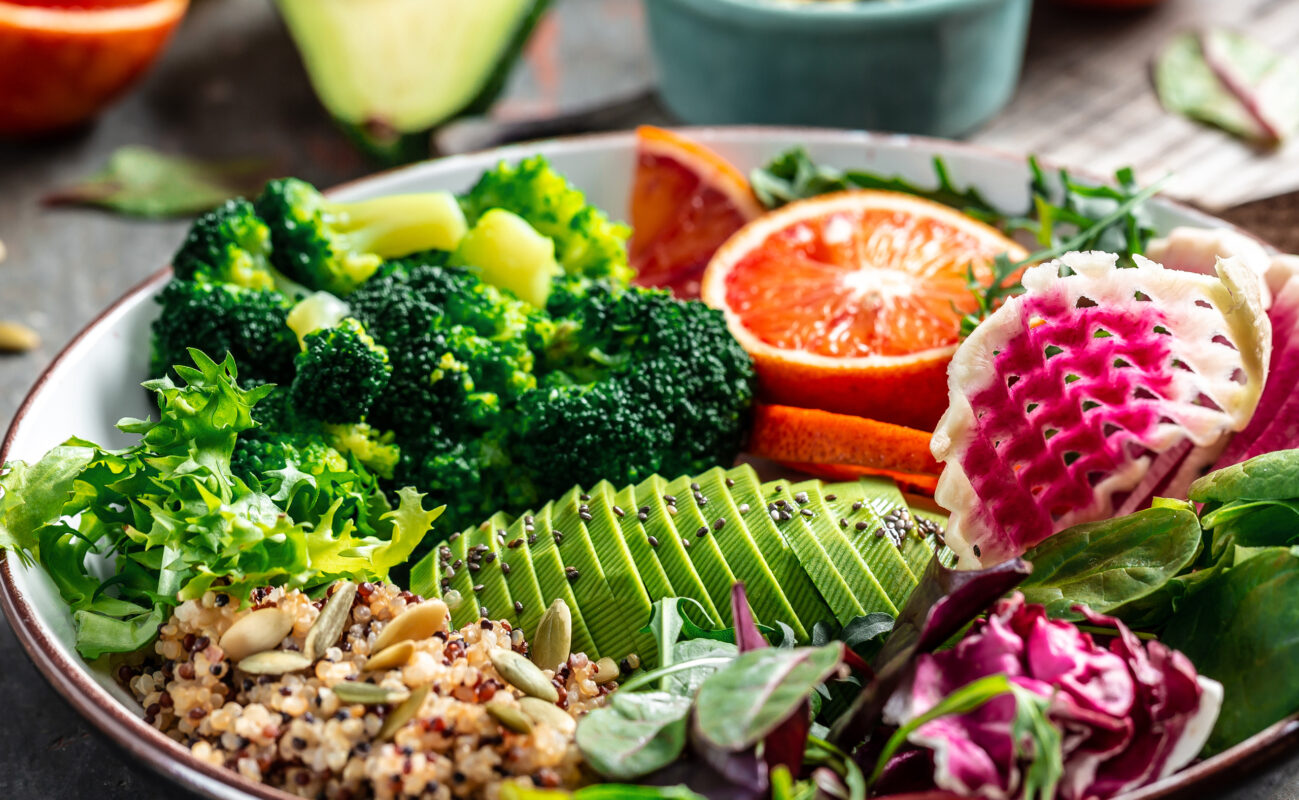
Positive, Neutral, and Negative Pranic Food List
Pranic Food List
Positive Pranic
Winter melon (Ash Goard)
Lemon
Honey
Coconut
Dates
Nuts and seeds
Raw and dried fruits
Ripe vegetables
Sprouted green grams
Sweet potatoes
Whole grains
Legumes (peas, beans, lentils, etc.)
Cereals (rice, buckwheat, barley, millet, oats, teff, spelt etc.)
Neutral Pranic
Potato
Tomato
Bell peppers
all members of the Nightshade family
Negative Pranic
Garlic
Onion
Scallion
Shallot
Leek
Chives
Asafoetida (Hing)
Chili peppers
Eggplant
Mushrooms
Yeast
Poppy seeds
White Vinegar
Cacao (cocoa)
Coffee
Tea
Alcohol
Tobacco
all members of the Allium family
other stimulants and intoxicants

How about you?
What is your relationship with food? Have you noticed how certain foods affect you? Or just let me know if this article was helpful to you. Let me know in the comments below.
Be Alive 🌱,
❤ Love, Julia
A Comprehensive Guide to Mindful Eating
It is not just what we eat that is essential, but what our body is able to digest. We can eat good food, but without proper preparatory steps, unknowingly, we can invite an array of digestive issues.
WHY and HOW to SOAK
I put this short video together 👆🏻highlighting the health benefits of soaking beans, nuts, seeds, legumes, and grains. In addition, I’m showing how to soak them in order to receive the most benefits; and at the end of the video, there is a soaking timetable for different nuts, seeds, legumes, and grains.
Videos
recipes
DISCLAIMER: The materials and the information contained on the Positive Pranic website are provided for general and educational purposes only and do not constitute any legal, medical, or other professional advice on any subject matter. None of the information on our videos is a substitute for a diagnosis and treatment by your health professional. Always seek the advice of your physician or other qualified health providers prior to starting any new diet or treatment and with any questions you may have regarding a medical condition. If you have or suspect that you have a medical problem, promptly contact your health care provider.


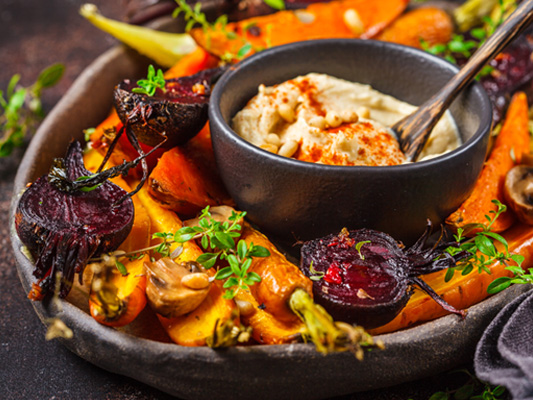


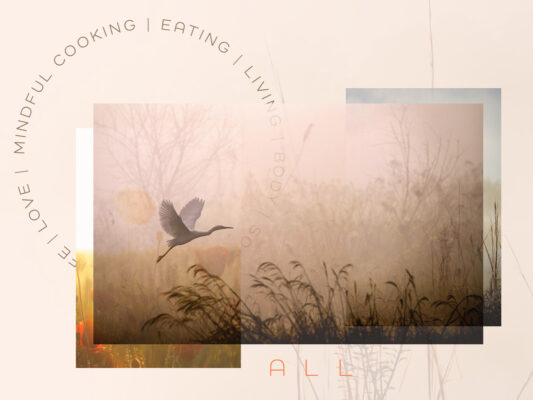




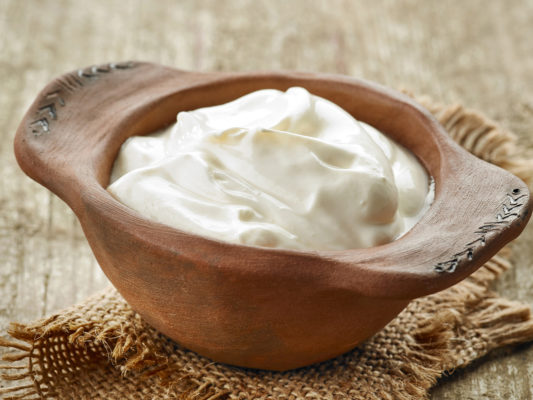
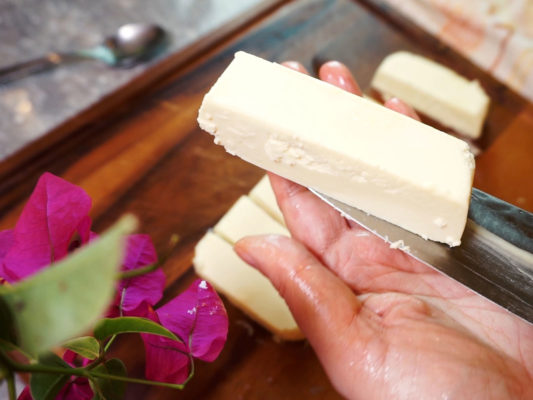
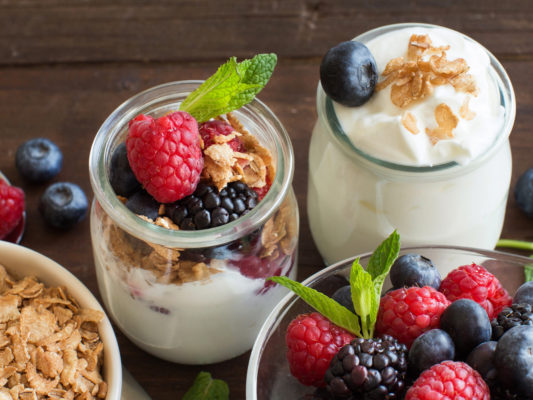
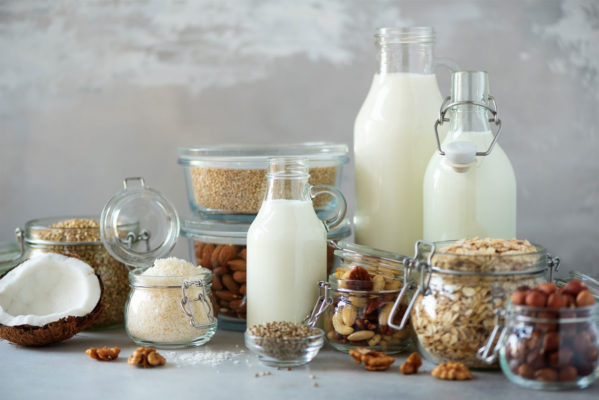
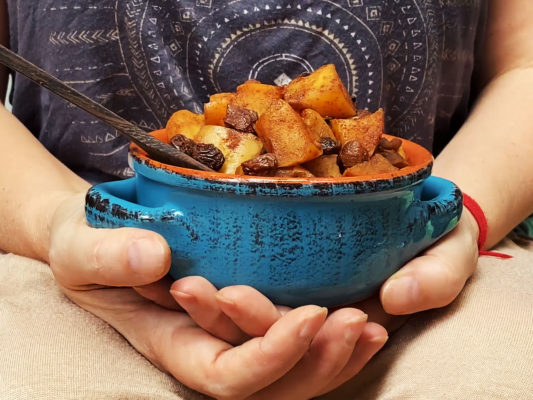
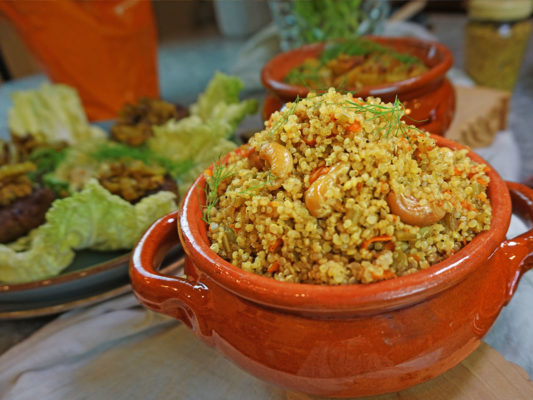
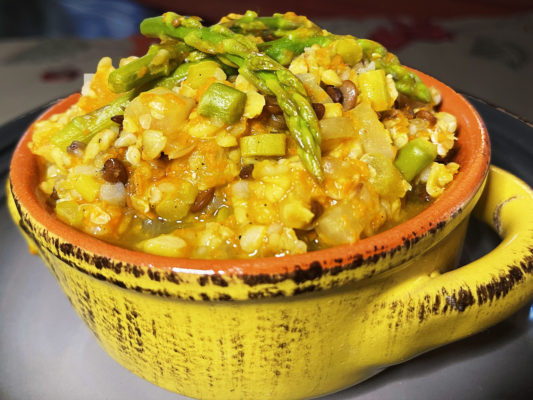
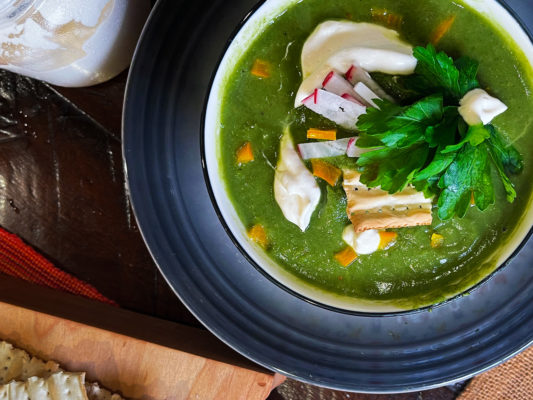
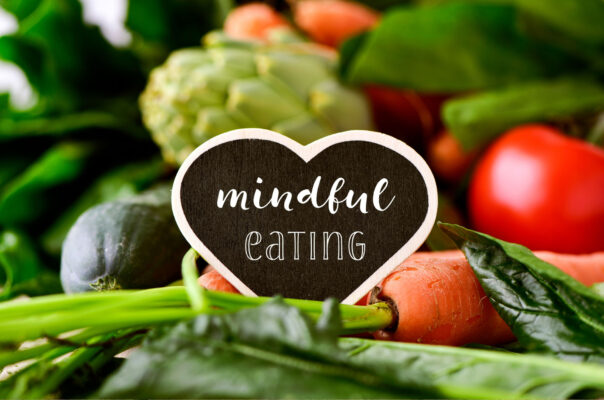
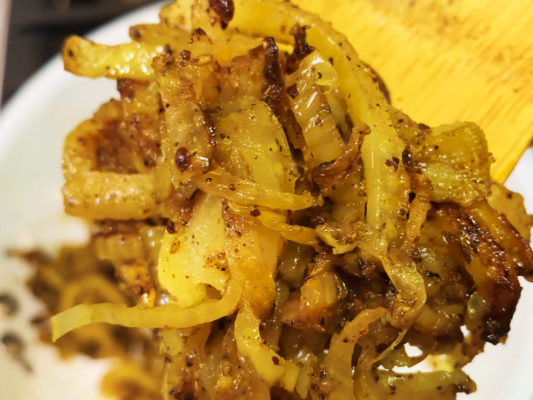
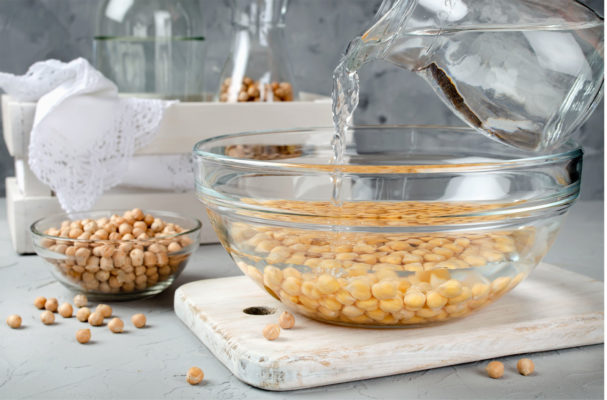




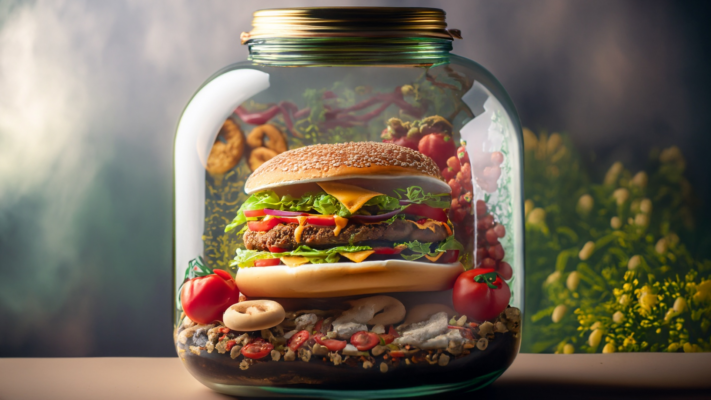


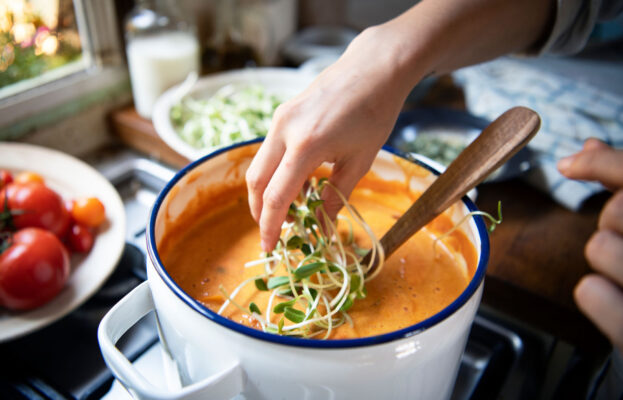
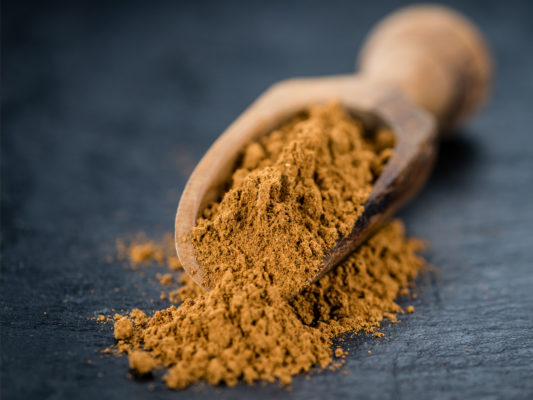
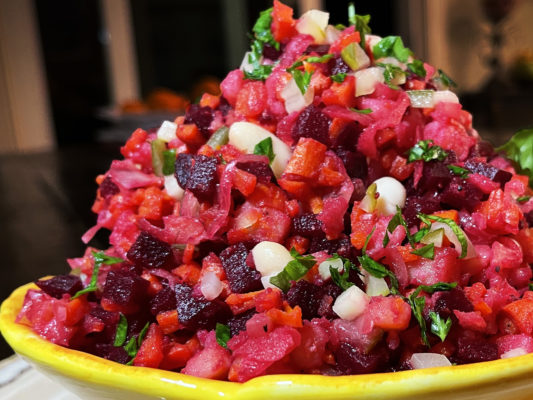
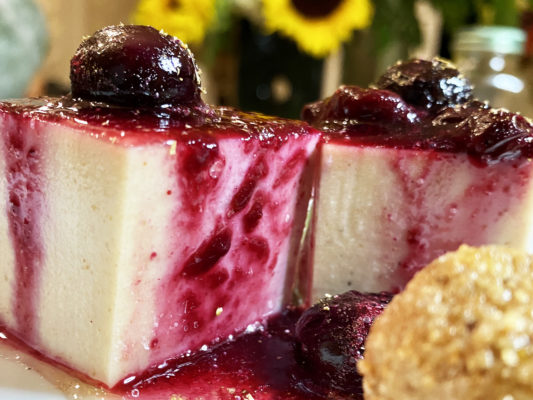
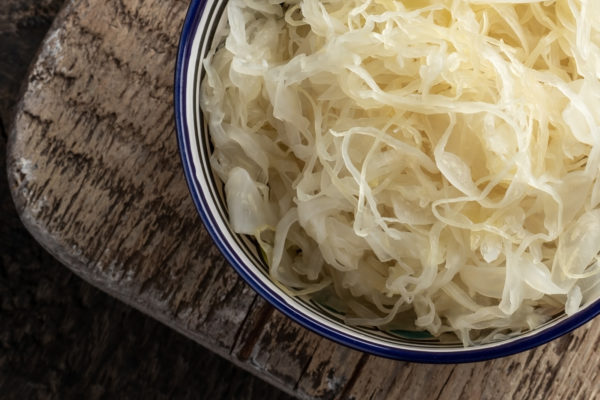
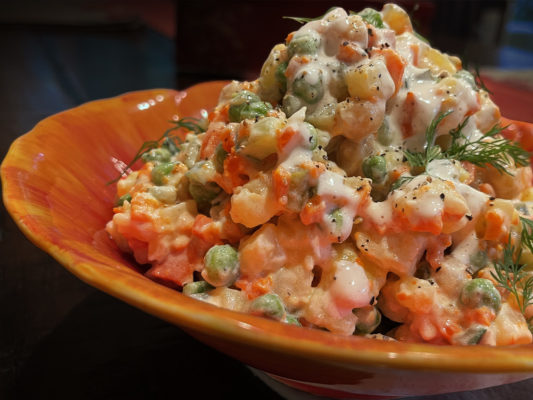
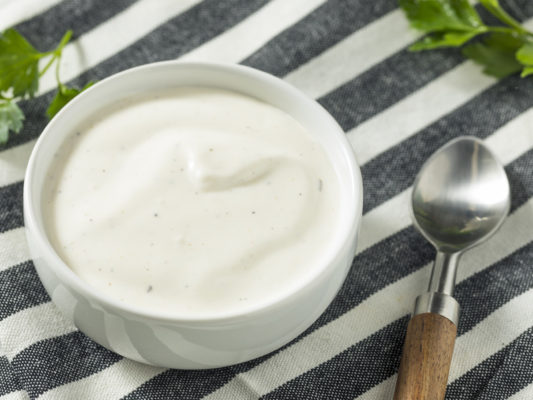
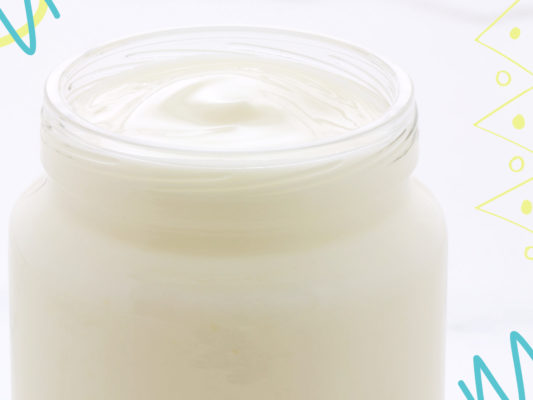
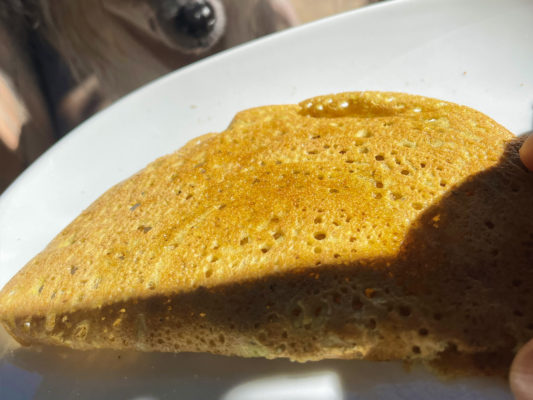
Thanks very much for sharing. I have seen several articles online and feel like they share the same source as lists are very similar. I was wondering, what’s the verdict on bread?
In my view, it depends on the bread’s ingredients. It is possible to find bread with wholesome ingredients that will be positively pranic 🙂 And I know a lot of meditators and yogis that are absolutely fine with consuming bread and feel great after eating it. But in my experience, bread makes me a little tired.
In some schools of the Sattvic diet, yeast is considered to be negative pranic. For me, It was almost impossible to find commercially made bread with no bakers yeast. Surprisingly, even flat brads have yeast.
I try to avoid commercially made bread; I prefer making easy flatbreads (2 ingredients only), dosas, parathas. They satisfy my bread cravings completely. Nowadays, some wholesome crackers are available as well. I plan on posting some easy recipes of bread with only a few ingredients pretty soon 🙂
Surprised to see Dosas and Parantha mentioned for eating outside India. By the way, loved your article. It is just what you need: precise and informative. Thank you.
Hello!
Try making the yeast in the traditional way, wholegrain flour, and water, in ten days your own sourdough is ready. I make the bread my own. The bread in the shop is usually added with soda and sugar to make the yeast work faster and the dough fluffy. If you bake the bread at home as I do, the bread will be heavier, it never ever gets moldy, and well you will eat way less because it is soo filling. The bread made with dried or refrigerated yeast takes 3 hours to finish while the bread made with sourdough takes an entire day, usually, I start early in the afternoon and it goes to the oven early in the morning at 5. It almost looks the same but the taste is very different. Since I started making my own, nobody wants to eat anything else.
Great!!!! Thanks for sharing!!
Thanks for your detailed response. I’m a big bread fan but I always feel a bit guilty about it; I’ll pay attention to how I feel and try cutting it for a while. Have a great day!
hermosa información vertida en este post , muchas gracias por compartirla.
Thank you very much Julia!
It was very insightful!
All The Best To You
from Georgia.
Thank you, dear. I’m glad you find it helpful. 💞
Thank you for the insightful and detailed information! I know how some foods impact your wellbeing in all aspects. Your information is one that reaffirmed that ! Your detailed information with the list of positive and negatives food is very helpful! I’m looking forward to read some more of the insightfully information as well as some recipes! Thank you again !
What about Sweet potato, yam, Avacado etc
Great article. Thank you very much🙏
Thank you for taking the time to let me know 🙏🏻
Thank you so much for sharing this information in an easy to follow outlined manner with attractive visuals. It inspired me to look for an app I could keep on my phone when shopping and cooking that identities positive, neutral and negative panic food, but I have not found one. I checked Google Play, Samsung Galaxy Store and Apple Store. I have one for my blood type, based on Eat Right For Your Blood Type and I find it helpful. I would if you can use your knowledge and develop an app like that. It would be beneficial. Perhaps even include recipes (or that could be a separate app.) Just a suggestion. Best wishes.
Hi Julia.. how does a food type get classified into positive, neutral or negative Pranic food type.. what is the basic constituent which distinguishes the food into these three types..
This type of classification is based on ancient Yogic science, also known as a Sattvic (Yogic) diet. 🙏
Hi Julia , I loved ur post on pranic foods, thank you for detailing the list of positive pranic foods which obviously we need to include into our diet and I surely will..
Thank you so much and god bless you
Thank you for your kind words 🙏 It makes me very happy knowing that this content is helpful. I really appreciate you stopping by and dropping me a line. 😊🌱🌺
Hello Julia,thanks you so much for sharing your experiences!!! I would like to ask, what kind of pranic energy has milk products like yogurt and cheese ??
Hi Julia, Appreciate your efforts in putting together these details. Awesome!! Thanks and God bless 🙏
Thank you very much. I appreciate your kind words. 🙏
great
🙏🏻🌺
This article is absolutely amazing..Thank you Julia
Thank you so much, I’m happy you find it helpful. 🌱🌺🙏
Thanks for this information.
I’m very interested in knowing about ancient yogic sciences. Especially the ones related to:
1. Combat and physical skills
2. lifestyle and obtaining/manipulating prana within the body.
3. Meditation for manifesting safety & security, as well as power. (I know most people use law of attraction for wealth, so I assume other things besides wealth can be attracted)
Thank u.
I was searching for this.
After seeing sadhgurur’s preach on food
I’m glad to have you here 🌱🌺🙏
Yes Janardhana!! Yes same here. 🙂 Have been following Sadhguru for a while now and first heard about this positive and negative pranic food from him. So this site is very helpful 😀
🙏🏻🌱🌺
Hello Ms. Delaney
can you describe what is the effect of positive foods on psychological disorders , tension or stress and there are an article about it?
Thanks
Thank you so much for sharing information it’s very useful
Thank you for stopping by. I’m glad you found this article helpful. 🙏
A lot of negative pranic food do help as medicines .
what is your opinion about it?
i am confused..
The other day i was feeling tired after a long drive, and was having a very minor flatulence.. i boiled two cloves of garlic popped it and i was just fine..
Now my question is how often can we use these negative pranic food as medicine?
secondly how can you suddenly stop eating something which you have been eating and liking for half of your life.. and bam you read an article and suddenly you got to basically stop it..
and everytime u succumb to ur taste buds u endup bieng guilty🤪?
Yes you are absolutely right. Some of the foods that are considered to be negative pranic are strong medicines and should be used like it. So you take them as needed but not more than that.
As to your second question I can say only from my experience. If you don’t eat garlic and onion for 2 months and then you eat it you will notice a strong effect on you. For me it was very profound. It made me feel heavy and sluggish right away. So I don’t miss garlic or onion at all. And now if I eat somewhere in a restaurant or maybe at someone’s house I don’t beat myself up if I have garlic or onion but I definitely feel down and tired and it lasts for a couple of days.
So even as a remedy I try to find alternatives to it. It is a great question though. I think I’ll write a whole article on it later.
But for now you can check this one out. I hope it will answer some of your questions.
https://positivepranic.com/onion-benefits-why-makes-you-cry/
Hello All, you want to enter into the spiritual journey, one should have great control on nervous system and one should not eat negative pranic food. The word “Prana” means “life”. Negative pranic foods spikes nervous system and disturbs your mind and increase stress levels. You can’t meditate peacefully and attain calmness. Thus, one should avoid negative pranic food, if you want to step in spiritual awareness.
If you want healthy life style and not going into spiritual journey, I want to clear one thing, you should eat what your body takes, not too accustomed to new things. Om Shanti.
thank you so much
🙏🌱🌺
I do not eat any meat but sometimes i eat eggs ,wanted to know ,what pranic the egg is? Is it okay to eat it when we are practicing yoga?
I’m not using eggs in my cooking because they are not considered to be positive pranic. You just pay attention to the way you feel after eating them and decide for yourself 🙏🏻
Hi Julia! Thank you so much for this offering. It’s a very useful article and full of great information. Could I ask what you may use as a substitute to onion? Would leeks also be considered the same as onions as I know they are part of the same family. I am on a spiritual journey and trying to re-evaluate my diet and make it much more clean and in line with a yogic mindset.
Many thanks,
Anita
Hi, Anita. thank you for watching 🙏 Leek is a part of Allium family. The genus Allium contains onion, garlic, shallot, scallion, chive, and Chinese onion; so, you are right, they are all brothers and sisters and that makes leeks not satvik. 🙏🏻🌱🌺
Please check out this article on different ways of substituting garlic and onion 🙏 https://positivepranic.com/garlic-and-onion-substitute/
❤️🌱🌺
Hey! Thanks for this work. I see teas are apart of the negative prana list. Does that include herbal teas?
No it does not. It applies only to the tealeaf, and maybe herbs that contain caffeine or nervous stimulant, like Macha, for example. 🙏
Omg, Julia! Do you have an alternative coffee shop? You sound like a professional alternative barista! You would do great with a restaurant ❤️
🤣😂🤣 I knew I had a hidden talent! 💃
Great blog very insightful! I’ve noticed a lot of the food is vegan however what is the verdict on ghee, yogurt, milk, cheese or just dairy products in general? I know they have been consumed in India for thousands of years especially ghee. Are these considered pranic?
Great question, Shazia!
I’m sharing plant-based versions of the recipes because I don’t consume dairy products personally. So, I feel like I can’t share the recipes with things I’m not using.
With this said, the Satvic diet is a lacto-vegetarian diet. It certainly allows for dairy products like ghee, home-made yogurt (curd), unaged cheese (paneer).
If you have a spoonful of ghee (clarified butter) daily, a few minutes before a meal does wonders for the digestive system. If you eat ghee with sugar, it is digested and turns into fat. But ghee without sugar can cleanse, heal and lubricate the alimentary canal.
When it comes to milk, only children below three years of age have the necessary enzymes to digest milk completely. Except in a few regions globally, milk is indigestible, mainly for a majority of adults worldwide. The undigested milk is mucus-forming and causes lethargy. Milk is also traditionally believed to be a good source of calcium. But there are several other good sources of calcium, notably whole grains.
When I go to South India, I enjoy dairy products in moderation. And it feels great! My body loves it! (especially kulfi!!!). But here, in America, I can’t eat dairy at all. It is a different kind of milk (milk type – A1, not A2) used for making yogurts, cheeses, and other dairy products. In addition to that, because animals are poorly treated, stuffed with obscene amounts of antibiotics and hormones, dairy products’ quality is greatly affected. Research has linked the high hormones in milk, cheese, and other dairy products to cancer.
Here is just one example: Research (1) found that women who consumed 1/4 to 1/3 cup of cow’s milk per day had a 30% increased chance for breast cancer. One cup per day increased the risk by 50%, and 2-3 cups were associated with an 80% increased chance of breast cancer. Regular consumption of dairy products has also been linked to other types of cancer, including prostate cancer. (2)
So, this is another reason why as a cancer survivor, I’m avoiding dairy products.
Traditionally, to be considered sattvic, milk has to come from a cow with a spacious outdoor environment, an abundance of pasture to feed on, water to drink, is treated with love and care, and is not pregnant. The milk should only be collected once the mother’s calf has its share. Dairy products like yogurt and cheese (paneer) must be made that day from fresh milk. Butter must be fresh daily as well and raw, but ghee can be aged forever and is great for cooking. Freshness is key with dairy. Milk should be freshly milked from a cow. Milk that is not consumed fresh can be refrigerated for one to two days in its raw state but must be brought to a boil before drinking and drunk while still hot/warm.
Basically, none of the store-bought dairy products would comply with the Sattvic requirements listed above 🤷🏼♀️ , in my opinion.
I hope I answered your question. 🙏🏻 🌱 🌺
🙏🏻🌱🌺
Great article … Well written, been looking for good article like this, good service to mankind on your part, Chapeau 🎩🎩👌
🙏🏻🌱🌺
Absolutely. I ate a gammon steak near the end of last year after I had cut out meat largely from my diet and I felt completely exhausted after eating it! I felt my whole body expending vast amounts of energy trying to digest it,
Namaskar)
Julia-san, thank you for sharing this) Very useful article for me.
I have two questions.
1. About mushrooms.
I met on Isha blog one recipe with mushrooms (Beetroot and Cardamom Soup). The kind of mushrooms is not specified. And googling didn’t help with more information from Sadhguru on mushrooms as food.
I ate different of them raw and cooked and mostly I sensed some heaviness under the navel after eating them.
What is your opinion on mushrooms’ influence on prana?
2. About chicory.
I drank and feel more energy after about 5 minutes for about a half an hour. Also it’s written it has no caffeine. And many good for health elements.
What is your opinion on chicory’s influence on prana?
Thank you, dear 🙏🏻
I try not to use any yeast in my cooking because all fungi are considered to be tamasic (Negative Pranic). A fungus is any member of the group of eukaryotic organisms that includes microorganisms such as yeasts and molds, as well as the more familiar – mushrooms.
Mushrooms are not considered to be positive pranic (sattvic) due to their fungal nature. They are not recommended in the yogic diet.
Personally, I seldomly eat mushrooms and I do use reishi mushrooms for medicinal purposes.
I think chicory is a great coffee substitute. I talk more about it here 👉🏻 7 best coffee alternatives that taste like coffee
🙏🏻🌱🌺
Thank you for answers, Julia-san)
There is great tool on top – search bar)
Before asking I searched for mushrooms.
And somehow did not for chicory)
Also thank you for videos)
🙏🏻🌞
Thanks Julia good information , while reading your article I remembered of sadhguru jaggi vasudev, a mystic from India.
🙏🏻
Hi Julia
I have not consumed onions or garlic raw for any long periods. However, I have eliminated rice and potatoes (starchy foods) from my diet which is in my experience is the main cause of lethargy and drowsiness. Yet, neither potatoes nor rice are considered negative pranic. Another confusing issue is that potatoes and tomatoes are indigenous to America how did an ancient science like Ayurveda accommodate and classify a non-indigenous tuber and fruit?
I eat a lot of Onion. I should limit my consumption.
Really a good article. I would like to thank you for this useful article. How easily and clearly you have explained about Negative and Positive Pranic Food.
Thanks again
Have a great day!
May I ask, if you always eat pranic food, or you do “cheat” from time to time into coffee or something?.
Thanks
Pingback: What Does it Mean to Live a Pranic Lifestyle? -
I was looking for the information of the food that increases heat and coolness in the body, but couldn’t find it
You can find it here: https://positivepranic.com/ash-gourd-juice/
Please clarify ‘ … Red palm oil is considered to be highly pranic. …’ Is it positive?
Thank you 🙏
Yes, it is it positive ptanic. 🙏🏻
I have recently discovered positive and negative pranic foods. Immediately, I searched And found your article. I have never seen a more detailed array of information which goes way beyond just listing foods. thank you so much. I have some reading to do.
🙏🏻💞